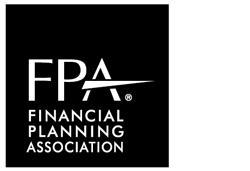Planning For Middle-Income Accounts
Подписаться на актуальные новости
Winning high net-worth clients is the number one goal for many advisors. But there’s a smaller population who deliberately target less-affluent or middle-class households, although what that means varies from one advisor to another. In some cases, they’re doing so for reasons of principle, trying to serve the 99%; in others it’s because the middle-class market isn’t crawling with competition.
Whatever the motivation, finding clients, understanding what they need and making a profit out of the middle class is a complicated proposition. Here’s how some advisors are trying to make a go of it:
Finding them. Many people in this demographic aren’t financially sophisticated—and may not even think they need a financial advisor. So you have to try things that wouldn’t resonate as much with wealthier prospects--teaching an adult ed course at a community college, say, or running workshops at high schools and local libraries.
Even more than with high-net-worth prospects, finding the specific needs of a particular niche can help. Take Jason Silverberg, who works at Financial Advantage Associates, a boutique financial planning firm in Rockville, MD ; most of his clients have less than $250,000 in assets. He learned the intricacies of federal employee benefit programs and runs a series of hour-long financial planning seminars for employees of the United States Patent Office. About 200 people typically attend, either in person or online and, according to Silverberg, about one-quarter schedule a free consultation afterwards. About 25% to 50% of those become clients.
Your marketing materials should broadcast you’re not targeting the usual suspects. Five years ago, Herb Montgomery of The Montgomery Financial Group in Orleans, Mass., updated his web site with the tag line: “The financial advisor to the not so rich and famous.” The site attracts about two inquiries a month, he says, and other prospects are delighted when they see it. Another approach: allying with an advisor who serves wealthy households who will refer less-affluent prospects to you.
Learning what they need. The Certified Financial Planning Board’s curriculum, while rigorous, isn’t focused on preparing you to address many of the challenges middle-class people face. So you need to fend for yourself.
Case in point: Myles Newborn III, a former corporate executive, started MY Financial Services in Stony Point, NY, four years ago, expecting his CFP to prepare him for all clients. He quickly learned that the important issues facing the middle-class market, like getting out of debt and cleaning up credit reports, were topics he both didn’t expect and wasn’t ready to address. To learn the ropes, he started doing pro bono work for the FPA, attending credit workshops and reaching out to consumer debt groups. He also cultivated a network of advisors to call on through the FPA and the Garrett Financial Planning Network, with which he is associated.
Making a profit. Depending on the lifestyle you’re comfortable maintaining for yourself, if you charge clients by the hour you can price yourself out of this market; go the AUM route, your accounts will have maybe $500,000 at most. So profitability is a challenge.
One answer is streamlining services. When Marilyn Dimitroff merged her Bloomfield Hills, MI, firm with another practice three years ago, she put in place a new two-tiered business model: Clients with more than $1 million in investable assets receive “Private Wealth” services, while less-affluent households get a more-streamlined, less-costly “Core Wealth” package. The latter has fewer meetings in the early stages and a 10-page workbook to fill out that makes the process more efficient for everyone, including her staff. While she doesn’t want to comment on specific numbers, according to Dimitroff, the system allows her to serve middle-class clients at a profit.
On the other hand, Montgomery uses plain vanilla investments. “There’s not a lot of management involved,” he says. Other advisors are experimenting with automated asset allocation platforms like Betterment Institutional to help serve less affluent households.
Dennis Breier, president of Fairwater Wealth Management in Burr Ridge, IL., uses eMoney to create a system through which clients can see their portfolios and balances. He refreshes their financial plan every two months without talking to the client just to make sure everything is on track; when needed, communication happens over the phone, via video conferencing or email. The result: a highly efficient system allowing him to charge an affordable monthly fee to less-affluent clients. “It’s a robo advisor for financial planning,” he says.
Подписаться на актуальные новости
Все анонсы актуальных новостей на нашей странице в Facebook






